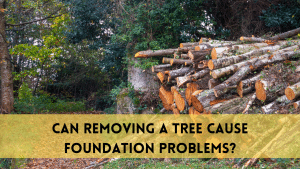If you find yourself wondering how to cut a palm tree, you’ve come to the right place. Infact, taking on this task might seem daunting, but with the right information and approach, it can be a manageable endeavor.
Understanding the Basics to Cut a Palm Tree
To begin with, it’s crucial to comprehend the anatomy of a palm tree. These towering giants consist of a trunk, fronds, and roots. Therefore, the first step in the process is to assess the tree’s height and the space around it. Remember, safety should always be your top priority.
Assessing the Situation Before You Cut a Palm Tree
Before you grab your tools, take a moment to evaluate the surroundings. For example, Are there structures nearby? Power lines? People? These factors will influence the direction in which the tree should fall. Safety precautions should be in place to avoid any mishaps.
Essential Tools to Cut a Palm Tree
At this point, let’s talk about tools. You’ll need a chainsaw, handsaw, ladder, safety gear (gloves, goggles, and a helmet), and possibly a rope. To emphasize, safety gear is non-negotiable, so ensure you’re properly equipped before diving into the task.
Planning to Cut a Palm Tree
Begin by trimming the fronds, starting from the bottom and working your way up. This approach, not only makes the tree more manageable but also ensures your safety throughout the process. Be sure to secure the ladder well and take your time; precision is key.
How to Cut a Palm Tree
The process to cut a palm tree involves making strategic cuts to ensure a safe and controlled descent. With that in mind, here’s a detailed explanation of the steps under “Making the Cut”:
1. Assess the Angle to Cut a Palm Tree
Before making any cuts on the trunk, assess the angle at which you want the palm tree to fall. Notably, this direction is crucial for safety and avoiding damage to surrounding structures. Identify the side facing your desired falling direction.
2. Initial Horizontal Cut
Start by making a horizontal cut on the side of the trunk facing the intended falling direction. This cut should be made at a 70-degree angle. This initial cut is the foundation for creating a notch that guides the tree’s descent.
3. Upward Cut to Create a Notch
Following the horizontal cut, make an upward cut at a 70-degree angle from the bottom of the trunk. This creates a V-shaped notch with the horizontal cut. The notch serves as a guide, directing the tree to fall in the desired direction.
4. Stand Opposite the Notch
As the tree starts to lean in response to the notch, position yourself on the opposite side of the notch. By doing so, you ensures that the tree falls in the intended direction and minimizes the risk of it deviating off course.
5. Final Cut to Cut a Palm Tree
Make the final cut on the opposite side of the notch, slightly above the horizontal cut. This cut severs the remaining portion of the trunk and allows the tree to fall smoothly along the predetermined path. Ensure a steady and controlled descent to prevent any unexpected movements.
6. Have an Escape Route
During the final stages of the tree falling, have a predetermined escape route planned. Move quickly and carefully to a safe distance away from the falling tree to avoid any potential hazards.
By following these steps and making precise cuts, you can successfully bring down a palm tree with control and accuracy. Safety measures should be maintained throughout the process, and the direction of the fall should be continually monitored to ensure a smooth and secure operation. Furthermore, always prioritize safety and take your time in executing each cut to achieve the desired outcome.
Ensuring a Safe Fall of Palm Tree
As the tree starts to lean, move to the opposite side of the notch and make the final cut. This cut should be slightly above the horizontal cut of the notch. By doing so, the tree will fall smoothly in the intended direction. Have an escape route planned in case things don’t go as expected.
Dealing with the Stump of Palm Tree
Once the tree is on the ground, it’s time to deal with the stump. Depending on your preference, you can leave it as is for a natural look or opt for complete removal. Use a chainsaw or an axe to cut the stump as close to the ground as possible.
Cleaning Up
The final step involves cleaning up the area. Dispose of the fronds and trunk responsibly. Moreover, If the tree had any diseases, it’s advisable to sanitize your tools to prevent the spread to other plants.

Tips and Tricks to Cut a Palm Tree
When tackling the task of cutting a palm tree, incorporating these tips and tricks into your strategy can contribute to a safer and more efficient process:
1. Safety First
First and Foremost, always prioritize safety throughout the entire tree-cutting process. Ensure you wear the necessary safety gear, including gloves, goggles, and a helmet. Clear the area of potential hazards, and have a well-thought-out escape route in case of unexpected events.
2. Precision Is Key when You Cut a Palm Tree
Next, take your time with each cut, especially when using the chainsaw. Precision ensures control over the tree’s descent and minimizes the risk of accidents. Rushing through cuts can lead to unpredictable results, so maintain a steady and deliberate pace.
3. Seek Professional Help if Needed
If the palm tree is exceptionally large or situated in a challenging location, consider seeking the assistance of professional tree removal services. Moreover, they have the expertise, experience, and equipment to handle complex situations safely.
4. Evaluate Surroundings
Before making any cuts, thoroughly assess the surroundings. Look for nearby structures, power lines, and people. Understanding the environment helps determine the direction in which the tree should fall, avoiding potential damage or accidents.
5. Use a Sturdy Ladder
Additionally, when climbing to reach higher parts of the palm tree, ensure the ladder is stable and securely positioned. A sturdy ladder provides a safe platform for making cuts on elevated sections of the trunk or fronds.
6. Dispose of Waste Responsibly
Finally, after successfully cutting down the palm tree, responsibly dispose of the fronds and trunk. Consider recycling or composting if possible. If the tree has any diseases, sanitize your tools to prevent the spread to other plants.
Incorporating these tips and tricks into your approach enhances the overall safety and efficiency of cutting down a palm tree. Remember that each palm tree may present unique challenges, so adapt these guidelines to the specific characteristics of the tree and its surroundings. Always exercise caution and prioritize safety throughout the entire process.
FAQs
Is it necessary to wear safety gear when I cut a palm tree?
Absolutely. Safety gear, including gloves, goggles, and a helmet, is crucial to protect yourself from potential hazards such as falling debris and sharp branches.
Can I use any type of chainsaw to cut a palm tree?
While both electric and gas-powered chainsaws can be used, it’s essential to choose a chainsaw with a sharp blade and ensure it is in good working condition for a smoother and safer cutting process.
What should I do if the palm tree is too large or in a challenging location?
In such cases, therefore, it’s advisable to seek professional help from tree removal services. They have the expertise and equipment to handle large or complex situations safely.
How do I dispose of the palm tree waste responsibly?
Consider recycling or composting the fronds and trunk. However, If the tree has diseases, be sure to, sanitize your tools to prevent the spread to other plants.
Do I need to plan the direction of the tree fall?
Yes, planning is crucial. To begin with, assess the surroundings, identify the intended falling direction, and plan each cut in advance to ensure a controlled and safe descent.
Conclusion
In conclusion, learning how to cut a palm tree requires a combination of knowledge, skill, and caution. By understanding the basics, using the right tools, and following a systematic approach, you can successfully tackle this task.
Ultimately, remember, safety should be your constant companion throughout the process. Above all, go ahead and conquer that palm tree with confidence!




